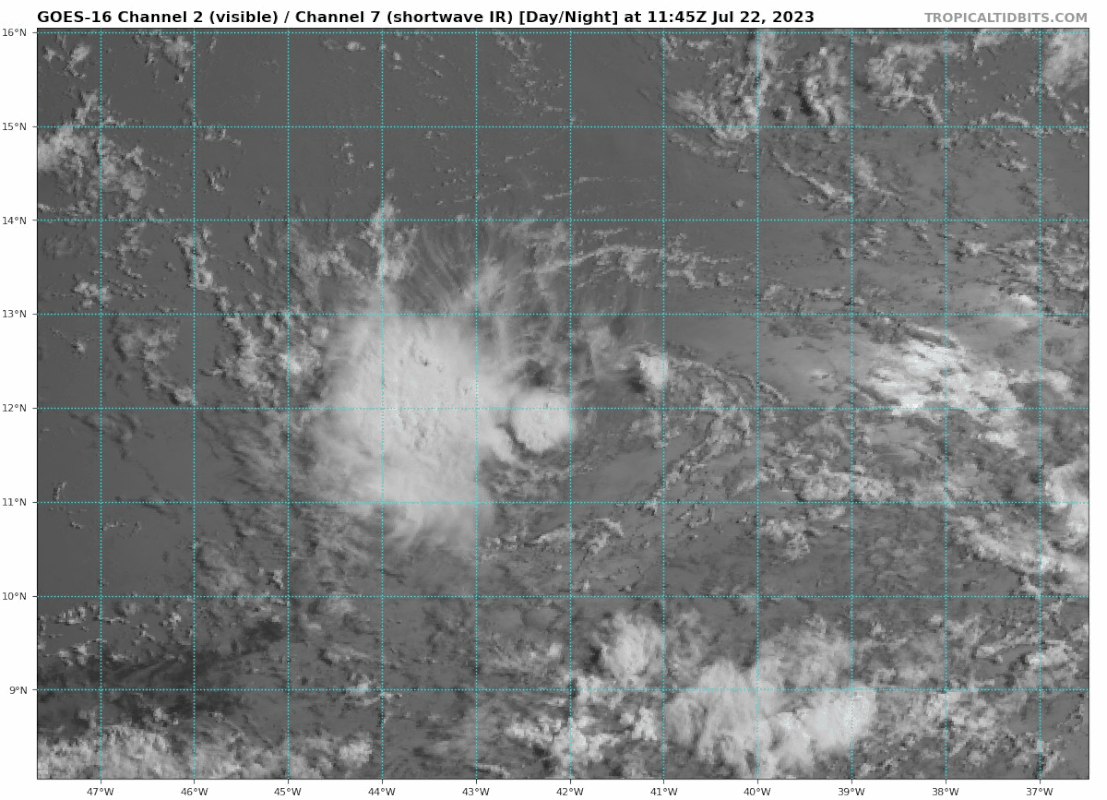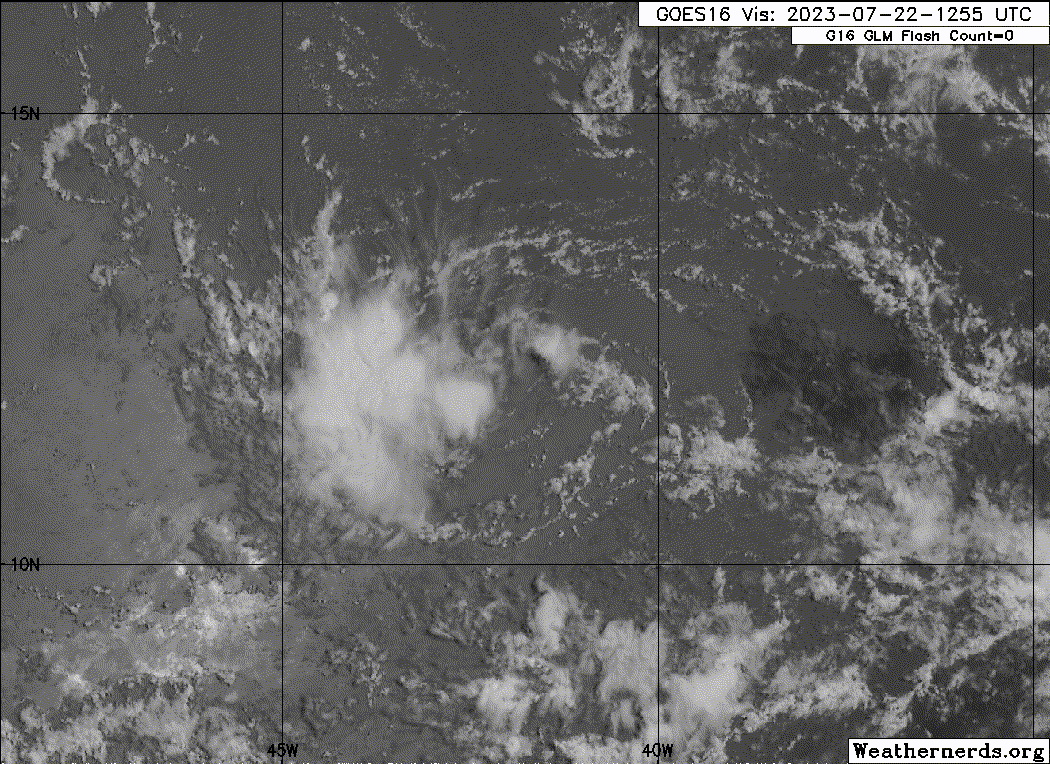Limited convection is a direct result of the background environment. We can see on the GFS 700-300mb RH analysis the obstacles 95L has to overcome. This causes multiple issues in the convective processes as (1) the system has to expend convective resources to battle against this background environment, (2) it limits convective expansion of the system (via degraded uplift in absent of a moist environment), and (3) it restricts inflow and outflow channels to the north and northwest:

Looking at the GFS sounding for 95L, while there isn't excessive shear, there is a change in steering regime starting at the mid-levels which is likely causing the displacement:

One other thing to note, as far as the SW dip, notice the orientation of the ridging here at the lower-levels (roughly highlighted in blue) and where the strongest steering influences are currently being felt with a weak/disorganized system. Don is making its second traverse over the top of an expanding subtropical high pressure area (track highlighted in pink), and this will again influence the orientation of the ridge:

The models haven't exactly handled the strength of Don particularly well, and you can see even at 24 hours Don has just enough of an influence on the SW periphery of the ridge to force 95L to dip southwest (where a center relocation would also be more expected given convective parameters):

With that said, the environment up until the Caribbean is marginally conducive for development. Once the system enters the eastern Caribbean, and with Don now out of the picture, high pressure begins to dominate the subtropical Atlantic:

This causes increased easterly flow in the Caribbean:

One last side note, there have been mentions on Twitter that this shear is related to El Nino; we would expect westerly wind shear (not easterly) if this was a result of El Nino (which typically occurs when the subtropical jet becomes amplified, which we haven't seen). This is your typical Caribbean/increased trades shear during July/early August.



















